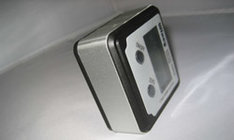I got two of the same square shaped magnetic digital angle finders off Amazon for about $20 each and I can have them on the same surface and one measures +.25 deg and the other -.25 deg, and that's too much for my ADD a$$ to be able to handle.
Where can I find a good but cheap-as-possible brand/model of these things that gives a more accurate angle measurement?
Where can I find a good but cheap-as-possible brand/model of these things that gives a more accurate angle measurement?

